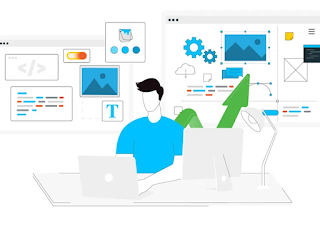Exploring the Latest Mobile App Development Frameworks
It is very important to recognize that the role of mobile app development frameworks is to make the work easier and optimize the app. An ever-rising market in application development means that there are several frameworks available for use that help in the creation, testing, and deployment of the app across platforms. Here we try to take a look at some of the new mobile app development frameworks that are creating ripples in the market.
1. Flutter
Overview
Flutter is an interactive UI created by Google; It allows developers to build natively compiled applications for Mobile, web, and desktop from a single code base.
Key Features
Fast Development: A Hot reload of the Flutter tool permits the application’s developers to preview changes without having to launch the application again.
Rich Widgets: This offers many more customizable widgets that help in building uniquely beautiful UIs without much effort.
Performance: Flutter apps run at native speed All Flutter apps are compiled, meaning they can be compiled directly into machine code.
2. React Native
Overview
React Native also developed via Facebook allows developers to build the mobile application using JavaScript and React. The Web App is a combination of native development and open web development.
Key Features
Cross-Platform Compatibility: Develop applications once and deploy them on both the world's most used operating systems iOS and Android thus minimizing development time.
Strong Community Support: This is an added advantage, especially for developers who are always in a large community that has numerous libraries to which developers can seek solutions in case of problems.
Native Modules: In React Native, developers have the lever to use native modules for high-performance tasks and can use native features for platforms.
3. Xamarin
Overview
Originally developed by Xamarin, before being acquired by Microsoft, Xamarin is an open-source and Cross-platform framework that empowers developers to use C# and .NET to manufacture applications that will run on Android, IOS, and Windows operating systems.
Key Features
Native Performance: Xamarin apps get to share code, but still can use native APIs, meaning that they’re almost as fast as native apps.
Shared Codebase: There is also the advantage of being able to use code between platforms meaning less time spent on creating the platforms.
Integration with Microsoft Tools: Integrates smoothly with Visual Studio and ultimately makes it easier for those who have been developing in a Microsoft environment.
4. Ionic
Overview
Ionic is an API, which is completely based on web applications, to develop hybrid mobile applications. It enables developers to develop application that runs different other platforms.
Key Features
Web Technologies: In other words, the creation of mobile apps can be achieved by the developers through applying web development tools.
UI Components: The basic interface structure together with the great majority of the GUI controls are already implemented with the best practices of the UI design of both iOS and Android provided by Ionic.
Progressive Web App (PWA) Support: PWA capability is made available to developers by Ionic to cater to mobile application development and Progressive Web Apps.
5. Apache Cordova
Overview
Apache Cordova (formerly PhoneGap) is a cross-platform application development framework that extends the use of HTML, CSS, and JavaScript for apps that are then housed in native shells.
Key Features
Cross-Platform Development: Develop once, target many – to make your program work on both iOS and Android.
Access to Device Features: Connects to device hardware characteristics like the camera, GPS, and storage users.
Easy Learning Curve: Web technologies that are already familiar to web developers can help them expand their skills to mobile application development.
6. SwiftUI
Overview
SwiftUI is a UI toolkit developed by Apple that is used for the creation of user interfaces with custom systems and applications on all Apple platforms. It enables developers to use Swift code in designing their User Interfaces.
Key Features
Declarative Syntax: SwiftUI follows an approach of declaring what the UI should look and behave like as compared to doing what it should do.
Live Previews: There are some new features for developers: all the changes can be viewed immediately on the interface in Xcode.
Integration with UIKit: SwiftUI integrates into UIKit applications, so developers can take it step by step in the development processes.
7. Kotlin Multiplatform Mobile (KMM)
Overview
KMM is a solution by which developers can reuse the code between the Android and iOS applications and make Kotlin a go-to language for cross-platform applications.
Key Features
Shared Business Logic: It allows designers to code most of the business logic and write separate code on the framework for each platform.
Native Performance: Writing KMM, it is possible to use native APIs while achieving high performance on both platforms.
Gradual Adoption: KMM can be introduced into the Project gradually and beginning with a single component, it does not require a complete overhaul of the Project.
Conclusion
At Projecttree, As we have seen above, the development frameworks of mobile applications are changing frequently with new technologies coming to market to suit developers and end users. Thus the choice of the right framework depends on certain behaviors such as the need of the project, the competency of the developers, and the required platforms. That way, developers can gain useful insights into the effectiveness of the newer frameworks and their characteristics that may contribute to the overall improvement of app development schemes as well as produce applications that meet users’ expectations.




Comments
Post a Comment